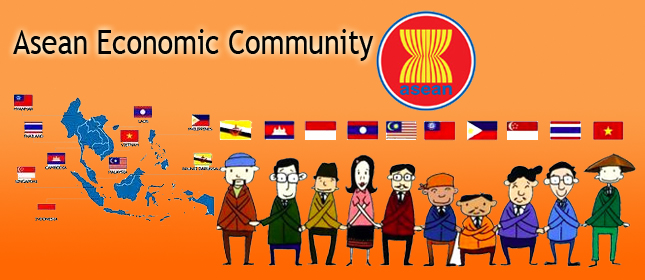Things you need to know about ASEAN

1. ASEAN ten member states form a global economic powerhouse
If ASEAN was a single country, it could already become the seventh largest economy in the world. This GDP growth is driven by labor force expansion and productivity. ASEAN forms the third largest labor force in the world apart from China and India. Perhaps the most important thing is that 60% of the total growth has came from sectors such as manufacturing, retail, telecommunications, and transportation grow more efficient.
2. ASEAN is not a monolithic market
ASEAN is a diverse group. Indonesia forms about 40% of the region’s economic output, whereas the GDP of Singapore is 30% higher than other member countries like Laos. The standard deviation of the average income of the ASEAN countries is 7 times more than EU member states. There is a big diversity to culture, language, and religion and geo locations. For examples, 90% Indonesian population is Muslim, Philippines is 80% Roman Catholic, Thailand is 95% Buddhist population.
3. ASEAN is a growing hub of consumer demand.
ASEAN has drastically outpaced the rest of the world in terms of GDP per capita. Income growth of the community has remained strong since the 2000s while the annual gain is more than 5%. Some members have growth even at torrid pace. The poverty figures have depleted rapidly and the share of the poverty line have become to just 3% starting from 14% from 2000 to 2013.
Almost 67 Million households are consuming class in ASEAN that are slated to double up by 2025. There is no typical ASEAN consumer however.
4. ASEAN is well positioned in global trade flows
ASEAN Community is 4th largest export region all around the world that trails behind only the European, China/Hong Kong and North America. It account to 7% of the total global exports. Furthermore, its members have developed sophisticated manufacturing capabilities over time. Malaysia is leading export for electronics, Vietnam is specialist in textiles and apparels while Thailand is top ranks in vehicles and automotive parts. Indonesia too is nothing behind and ranks well in palm oil export, coal export, cocoa and tin exports.
5. Intra-regional trades can significantly deepen the implementation of the ASEAN Economic community, but with hurdles
Somewhere around 25% of the regional exports goods is being sent to other ASEAN partners and the shared have remained rough and constant since 2003. While this accounts less than half of the shares in the intraregional trade seen in other countries, the total value of climbing up rapidly as the region has developed strong cross border supply chains.
6. ASEAN Community is home to many globally competitive companies
In the year 2006, ASEAN housed headquarters of around 48 companies enlisted in the Forbes Global 200. By the year 2013, the count had risen to 74. Now it includes around 227 of the world companies that have more than $1 Billion as their revenues or 3% of the world’s total. Singapore stands out in the league and tanks 5th in the world for having most corporate headquarters density and foreign subsidiaries.